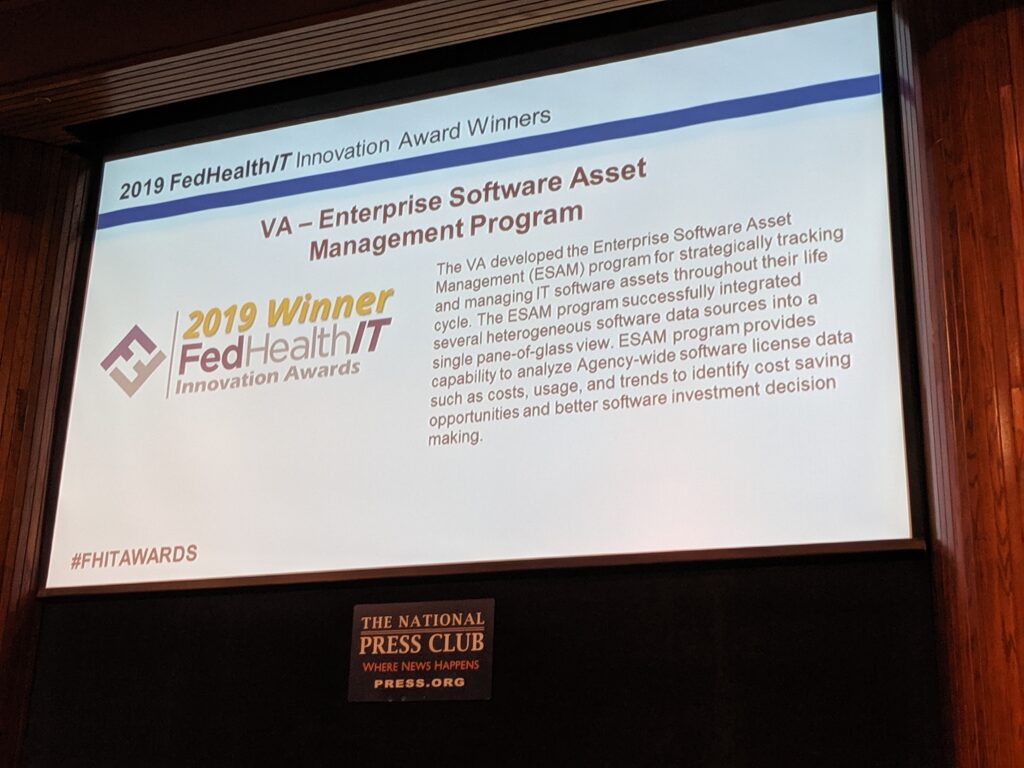It may not be awards season on TV anymore, but that won't stop the VA.
Every so often, great work done by great people gets the publicity it deserves. Here, I can highlight the outcomes as well as the great impact this win has had on others. So is the case with the US Department of Veterans Affairs (VA) Enterprise Software Asset Management (ESAM) team members who received the FedHealthIT 2019 Innovation Award.
Led by award recipient Madhavi Nookala, Senior Enterprise Architect and former Director of the Technology Innovation Program Office (TIP), the award nominees were determined by judges from government and industry with a focus on innovation. Awards were given across several programs from CMS, HRSA, FDA, USDS, and HHS to VA and DHA. This mix of programs is driving innovation and results that are making a difference.
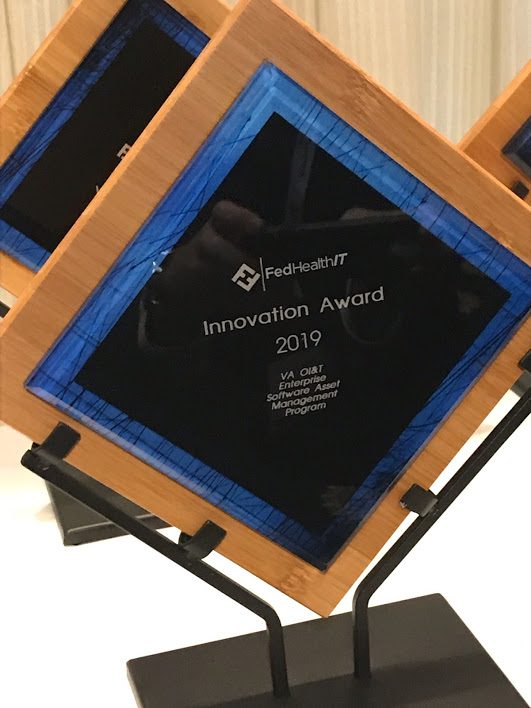
For 1E, the recognition highlights a collaborative and rewarding initiative with the VA. This win is due to leveraging expertise from 1E, the VA, and software automation tools and processes, namely the 1E AppClarity solution.
Awards and A's
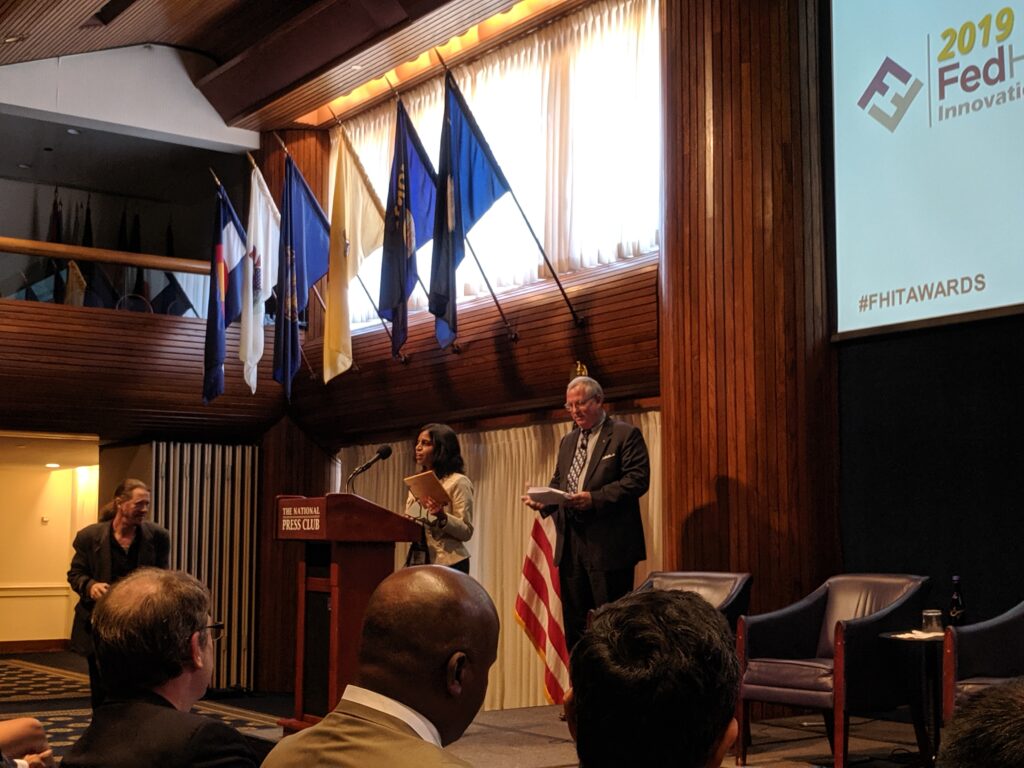
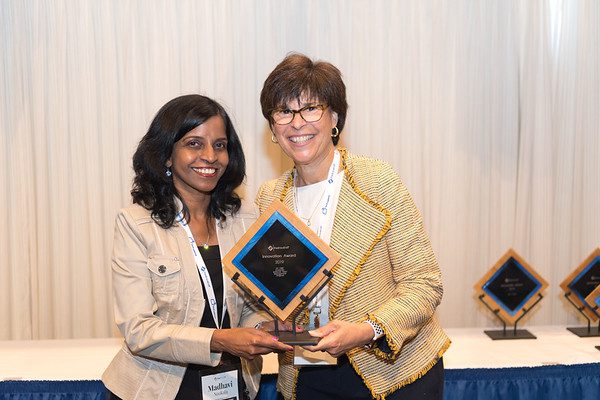
Madhavi Nookala is pictured here, receiving the award on behalf of the VA
From FedHealthIT describing the award for ESAM:
The VA developed the Enterprise Software Asset Management (ESAM) program for strategically tracking and managing IT software assets throughout their life cycle. ESAM successfully integrated several heterogeneous software data sources into a single pane-of-glass view. The ESAM program provides capability to analyze agency-wide software license data. This includes costs, usage, and trends to identify cost-saving opportunities and better software investment decision making.
In addition, by proactively choosing the right software and team, AppClarity, and VA has been awarded a FITARA A grade in Software Inventory (now maintained for over 18 months). VA is the second largest and most complex Agency to receive this FITARA score.
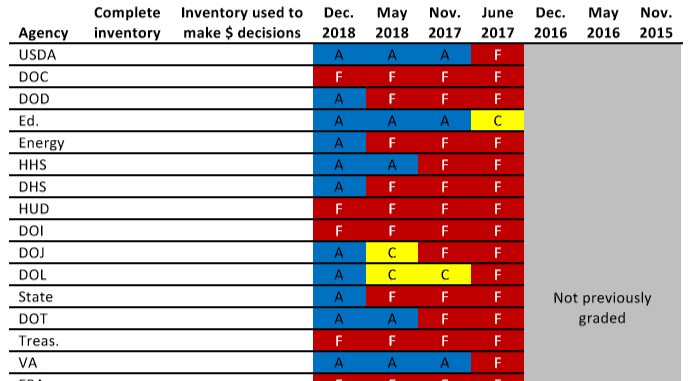
How did they do this?
Scale of the Challenge
Imagine the VA enterprise of systems: over half a million end points, physical and virtual with multiple different operating systems, distributed around the country providing critical services for the VA IT operations, but more importantly the care of the US veterans in an effective, timely and compassionate manner.
Often the software needs of a medical center in Florida are different when compared to that of an occupational placement facility in California. This would lead VA regions to contract and use the software in a region capacity, making it nearly impossible to track and manage software on a macro level.
The VA recognized the need to implement a broader management strategy for this challenge.
The VA proactively developed the ESAM team, with the large task developing and executing the strategy. From the VA requirements statement for the ESAM program:
'Recent enterprise-wide software licenses renewals and budget cutting exercises have highlighted the limitation VA has in the management of applications to include usage, what applications are actually deployed within the enterprise, true needs, and related spending. Evolving technology has moved away from standard desktop workstations to remote access mobile devices, virtual machines and bring your own devices. While VA owns varying tools from Microsoft System Center Configuration Manager (SCCM) to IBM Tivoli Endpoint Manager (IEM), there is no single organized solution that meets the overall need to effectively manage software licenses and costs across the VA enterprise. In order to reduce software license spending to what is necessary, significantly minimize resource burden in both administration and management, and ensure license term compliance, VA requires an Enterprise Software Asset Management (ESAM) solution for workstations, servers, and mobile devices.'
Perhaps a BAU activity for some companies, but for large organizations, a significant challenge.
What does a large mean in this context? Consider 152 medical centers, 821 outpatient clinics, 56 benefits regional offices, and 131 memorials sites. Don't forget to include more than 500,000 desktop, server, laptop, and mobile devices, which contain various software assets.
In addition, the OneVA Technical Reference Model provided profiles of more than 1,200 software vendors and 12,000 standards/software assets used across the VA enterprise.
With these complexities, the VA realized there were significant challenges in the discovery and management of applications. This includes deployment and usage calculations, multiple different virtualization environments, clustered environments, various software titles with differing licensing metrics. Plus, the associated related spending. Any tool had to be able to handle hundreds of millions of records. Also, from different sources to create a single-pane-of-glass view.
The Solution, 1E and VA People, Process, Technology
The VA wanted to create a new culture of innovation to solve this challenge. They created the Technology Innovation Program (TIP) office to support new systems and procedures for the enterprise SAM framework.
Ms. Nookala led the ESAM program, components of the TIP office, to define and recommend compliance standards throughout the VA. Where this effort was previously very difficult, the ESAM team was able to use the tools and defined a process to present unified reports of the entire VA estate. This includes virtualization and clustering relationships.
The VA ESAM team had both the technical and software compliance expertise to know what data was required and how to interpret the results.
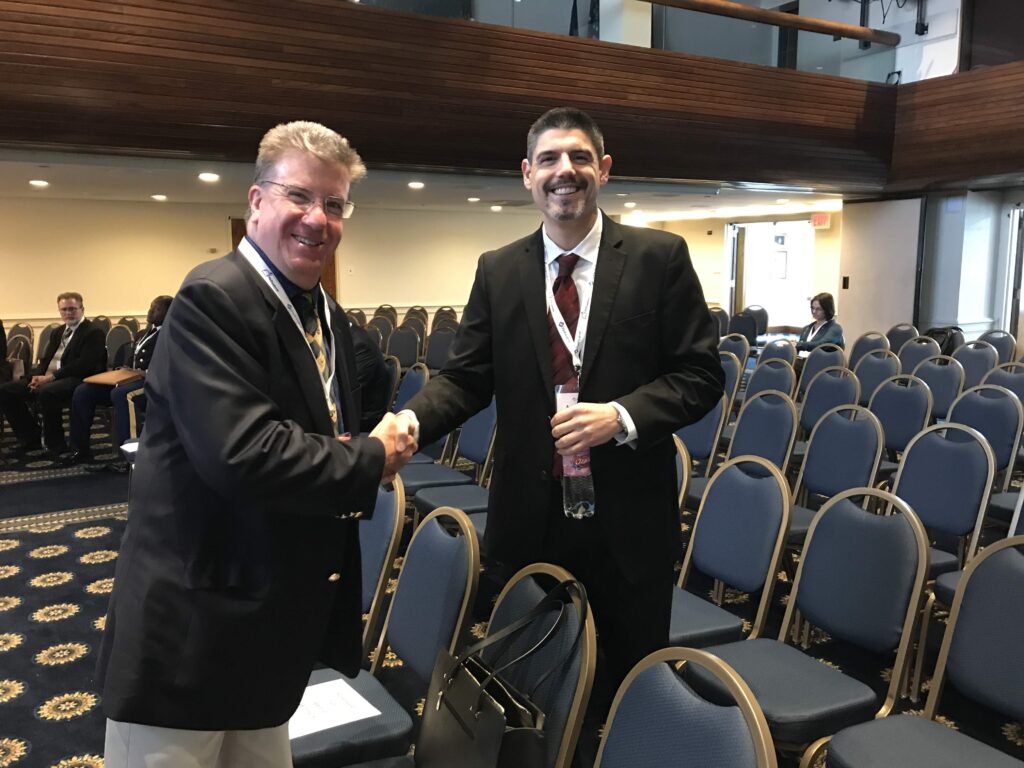
Steve Klos of 1E on the left, and Arnold Vento
SAM experts like Steve Klos and Sean Day partnered with the 1E Expert Services and product team members. They provided the data connectors and best practice recommendations from other facets of the SAM standards industry. This allowed the VA to shape their strategy accordingly to stay on the leading edge.
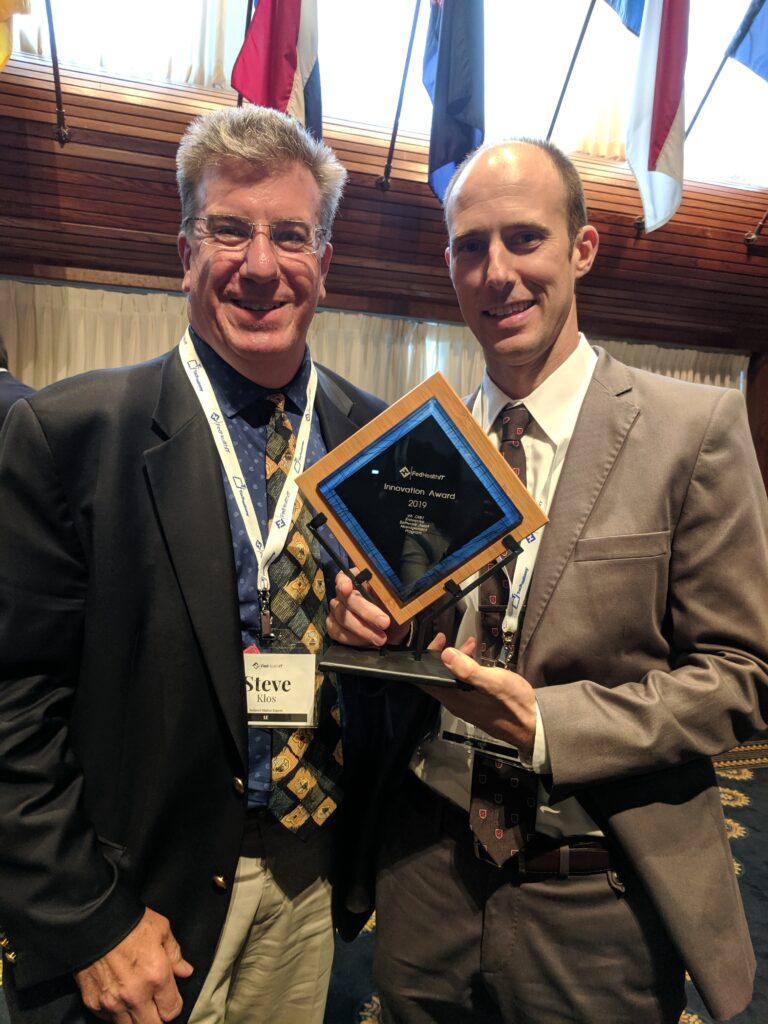
Steve Klos and Matt Albert of 1E
Process
With the right people and technology in place, the VA drew from industry best practice to affect change. Collaboration between distributed business units, and training from the ESAM team led to new skill development for SAM.
Through this partnership, the VA was able to institute the central software license management approach they desired. This allowed software spending and enterprise licenses management to funnel through centralized decision making.
Now that process has been defined and adhered to, it has changed the way the VA spends money. They are now able to make a better decision about software spend. Considering the yearly VA IT budget of $4B, this approach has a hugely beneficial impact.
Technology
One of the primary tools leveraged by the ESAM team is AppClarity. AppClarity is built to consume raw data the various VA systems management tools, normalize, and output software compliance position options based on end user software usage.
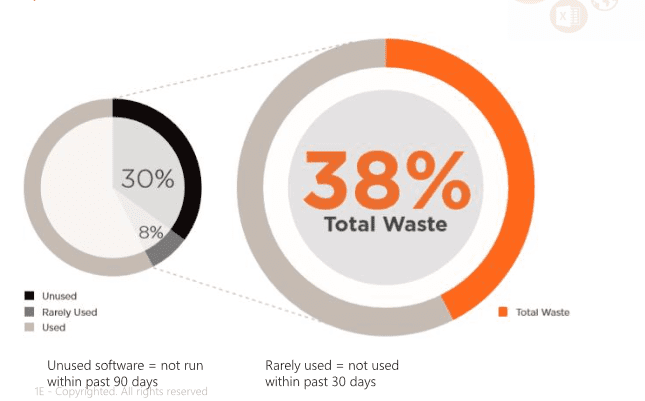
Using the 1E developed, ISO standards-based entitlement repository, the VA is able to track any license metric from any vendor for any product. The 1E entitlement repository is managing more than $3 Billion in software licenses.
AppClarity placed in the visionary quadrant of the Gartner Magic Quadrant in 2019 and continues to drive innovation for the VA as a leading market SAM tool.
AppClarity continues to make good on the initial VA decision and investment.
So What?
The VA could now track and make sense of the massive software estate, and most importantly, take action.
The ESAM team and the VA’s software inventory improvements resulted in cost savings of approximately $65 million between 2017 and 2020. As a result, millions of dollars were saved instead of spent on software that isn't used. This money can now be allocated to care of the veterans.
Congrats to the ESAM team and the VA!

